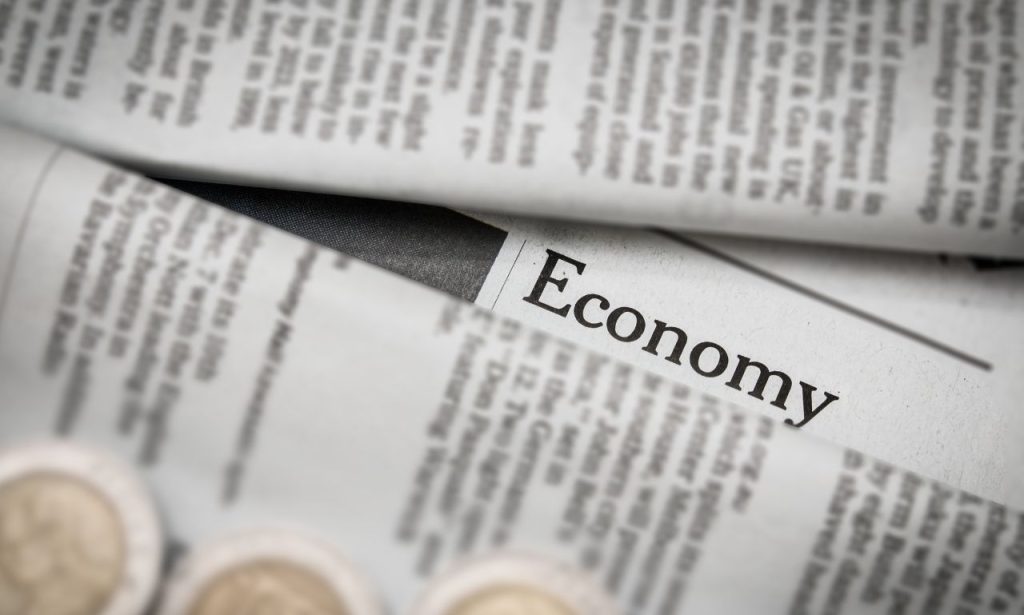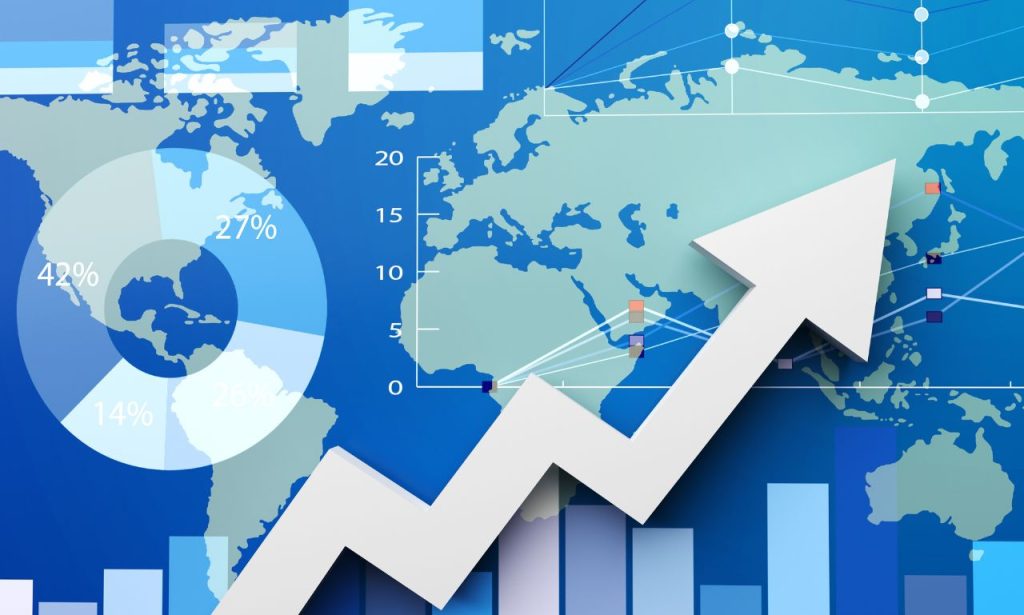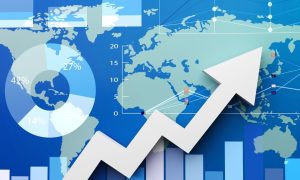Ever notice how some economies seem stuck in a perpetual rut while others zoom ahead? I’ve spent years analyzing this pattern, and it often comes down to one critical factor: demand. When demand falls short, it creates a ripple effect throughout the entire economic system. This impact isn’t just theoretical—it’s happening in real economies worldwide right now.
In this article, I’ll explain exactly how low demand impedes productivity growth and economic development. We’ll explore the relationship between consumer spending power and business innovation, examine real-world examples of demand constraints, and examine practical strategies that businesses and policymakers can implement to overcome these challenges.
Understanding Demand in Economics
Demand isn’t just a buzzword economists use—the engine drives economic activity. At its core, demand represents the willingness and ability of consumers to purchase goods and services at various price points. This concept might seem simple, but its implications run deep.
Think about it this way: consumers buy more when they have money to spend and confidence in their financial future. This spending signals to businesses what to produce and how much to invest. My conversations with business owners consistently confirm that customer demand is their primary consideration when deciding to expand operations or hire new employees.
The relationship works both ways, too. Strong demand encourages businesses to scale production, typically requiring more workers, better technology, and process improvements. These factors combine to create what economists call “demand-driven growth.”
But many people miss the fact that demand isn’t evenly distributed across economies or sectors. Some industries face persistent demand shortfalls, while others experience surges. Take the contrast between smartphone technology and basic infrastructure in developing countries. The former experiences robust demand growth that fuels rapid innovation, while the latter often struggles with insufficient funding despite clear social needs.
Historical evidence supports this observation. During the post-World War II economic boom, strong middle-class spending power created sustained demand that drove decades of productivity improvements. Contrast that with periods of economic stagnation, when weak consumer spending repeatedly coincided with productivity slowdowns.
The Relationship Between Demand and Productivity

Let’s address the million-dollar question: How does low demand hurt productivity? The connection is more direct than you think.
When businesses face weak demand, they naturally hesitate to invest in new equipment, technology, or training. I’ve seen this firsthand in consulting with companies across various sectors. One manufacturing client asked, “Why would I buy expensive new machinery when I’m only running at 60% capacity now?” This reluctance creates a vicious cycle where underinvestment leads to aging technology and processes, further eroding competitive advantage.
Productivity also suffers when workers have idle time due to insufficient orders. A bakery that could produce 1,000 loaves daily but only sells 500 isn’t operating efficiently, regardless of how skilled its bakers are. This underutilization of resources represents a significant productivity drain across the economy.
Innovation also takes a hit during periods of low demand. Companies focusing on survival tend to cut R&D budgets first. A recent conversation with a tech CEO revealed that his firm had shelved three potentially groundbreaking projects simply because market conditions couldn’t justify the investment risk. When this happens across an economy, technological progress slows dramatically.
Perhaps most concerning is what economists call “hysteresis”—the lasting damage when productive capacity is permanently lost due to extended periods of low demand. Workers’ skills deteriorate, equipment becomes obsolete, and businesses shut down, creating gaps that are difficult to fill even when demand eventually returns.
Economic Development and Low Demand Dynamics
Low demand presents an even more formidable obstacle to growth for developing economies. These countries often face a Catch-22 situation: they need productivity improvements to increase incomes, but without sufficient incomes, there’s inadequate demand to justify productivity investments.
My work with small businesses in emerging markets has repeatedly revealed this challenge. One agricultural cooperative in Southeast Asia significantly improved its production methods, but couldn’t sell its additional output because local consumers couldn’t afford it. Meanwhile, transportation costs made reaching wealthier export markets prohibitively expensive.
Domestic demand constraints create particularly tough conditions for local entrepreneurs. Unlike multinational corporations that can tap global markets, local businesses depend heavily on nearby customers. When those customers have limited purchasing power, local business growth stalls, regardless of how innovative or efficient the business becomes.
This situation creates what development economists call a “middle-income trap,” where countries achieve initial economic gains but stagnate before reaching high-income status. These economies struggle to move up the value chain without sufficient domestic demand to drive continued productivity improvements.
Even access to capital reinforces this dynamic. Banks are naturally reluctant to finance business expansion when demand forecasts look weak, creating another barrier to productivity growth. A banker in West Africa told me bluntly, “We see plenty of good business ideas, but too few viable markets for their products.”
Causes of Low Demand
Understanding the root causes of insufficient demand helps identify potential solutions. Several factors typically contribute to this economic challenge.
Income inequality is a major culprit. When wealth concentrates among a small population segment, overall spending power diminishes because high-income households save a larger portion of their income. My analysis of consumer spending patterns shows that $1 million spread among 20 middle-class families generates significantly more demand than the amount held by one wealthy household.
High debt burdens also suppress demand by forcing consumers to prioritize debt repayment over new purchases. Following the 2008 financial crisis, American households spent years rebuilding their balance sheets instead of increasing consumption, despite falling interest rates. This debt overhang created a persistent demand shortfall that slowed the recovery.
Demographic shifts play a role, too. Aging populations typically spend less as they move toward retirement, creating natural headwinds for demand growth. Japan’s experience since the 1990s illustrates how demographic decline can create stubborn demand constraints that resist traditional economic policies.
Trade imbalances can also impact domestic demand. Countries running persistent trade surpluses effectively export demand to trading partners, sometimes at the expense of their domestic markets. This approach might boost export-oriented industries but often leaves domestic sectors struggling with insufficient demand.
Finally, technological disruption sometimes creates temporary demand gaps. As innovations render existing products obsolete, spending may pause while consumers wait for new standards to emerge. I’ve observed this pattern repeatedly in the tech sector, where anticipation of new releases can freeze purchasing decisions for months.
Implications for Economic Policy
Traditional economic policy often focuses on supply-side interventions, such as improving infrastructure, deregulating markets, or providing tax incentives for investment. While these approaches have merit, they may miss the mark when low demand is the binding constraint on growth.
Monetary policy alone shows apparent limitations in stimulating demand during certain economic conditions. Despite years of near-zero interest rates following the 2008 financial crisis, many advanced economies experienced sluggish growth and below-target inflation—a phenomenon economists call “secular stagnation.”
My discussions with policymakers increasingly acknowledge this reality. One central banker admitted, “We can make credit cheaper, but we can’t force businesses to borrow or consumers to spend.” This recognition drives a reassessment of policy approaches across the economic development spectrum.
Fiscal policy tools often provide more direct demand stimulus through government spending or targeted tax cuts. Infrastructure projects, for example, create immediate demand while building capacity for future growth. Similarly, social safety net programs that put money in the hands of lower-income households tend to generate higher multiplier effects since these consumers spend a larger portion of their additional income.
Trade policy also deserves consideration in a demand-constrained environment. While free trade brings many benefits, countries may need to prioritize balanced trade relationships, supporting domestic demand, and export opportunities.
Strategies to Enhance Productivity Amid Low Demand

Businesses and policymakers can pursue several approaches to boost productivity even when demand remains constrained.
Market expansion represents one promising strategy. Businesses can grow demand beyond their traditional base by identifying new customer segments or entering additional geographic markets. Digital platforms have made this approach increasingly accessible even for smaller firms. One client of mine tripled sales by identifying cross-border opportunities for products that had reached saturation in their home market.
Product differentiation offers another path forward. Businesses that can create unique value propositions may command premium prices and stimulate demand even in otherwise stagnant markets. The explosive growth of specialty coffee shops amid flat overall coffee consumption illustrates this principle perfectly.
Collaborative consumption models sometimes unlock demand by making products accessible to customers who couldn’t afford outright ownership. Subscription services, sharing platforms, and pay-per-use arrangements can expand the potential customer base while maintaining profitable operations.
Public-private partnerships often create viable approaches to address challenges. Government procurement can provide baseline demand that makes productivity investments feasible, while private sector involvement ensures market discipline and efficiency.
Technology adoption remains crucial, especially digital tools that simultaneously lower costs and expand reach. E-commerce platforms, for instance, help businesses tap demand from distant markets without prohibitive distribution costs.
Conclusion
Low demand creates real constraints on productivity growth and economic development—constraints that can’t be wished away by simply focusing on supply-side improvements. Evidence from both advanced and developing economies consistently shows that demand shortfalls limit investment, innovation, and efficiency improvements.
Moving forward requires balanced approaches that address both supply and demand factors in economic development strategies. Policymakers must consider income distribution, debt dynamics, and trade balances alongside traditional productivity enhancement measures.
For businesses navigating demand-constrained environments, creativity and flexibility become essential. Finding new markets, differentiating offerings, and adopting cost-efficient technologies can create growth opportunities even when demand remains sluggish.
The relationship between demand and productivity isn’t just theoretical—it’s a practical reality that shapes daily business decisions and economic outcomes. By understanding and addressing these connections, we can develop more effective strategies for sustainable economic growth.
ALSO READ: How to Manage a Seasonal Business
FAQs
Low demand occurs when consumers’ willingness or ability to purchase goods and services falls below the economy’s productive capacity, leading to underutilization of resources.
Higher-income inequality typically reduces overall demand because wealthy households save a larger portion of their income compared to middle—and lower-income households.
Yes, but it’s more challenging. Businesses must focus on innovation, market expansion, or product differentiation rather than capacity increases.
Policies that strengthen middle-class purchasing power, invest in infrastructure, and promote balanced trade relationships are most effective.
Successful companies look to underserved market segments, international expansion, or creating new value propositions that stimulate demand despite broader financial conditions.




